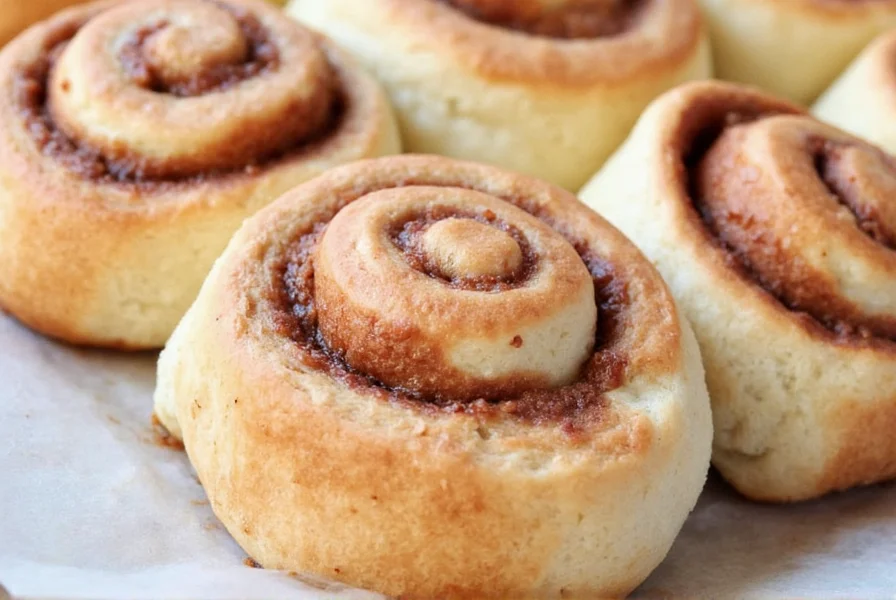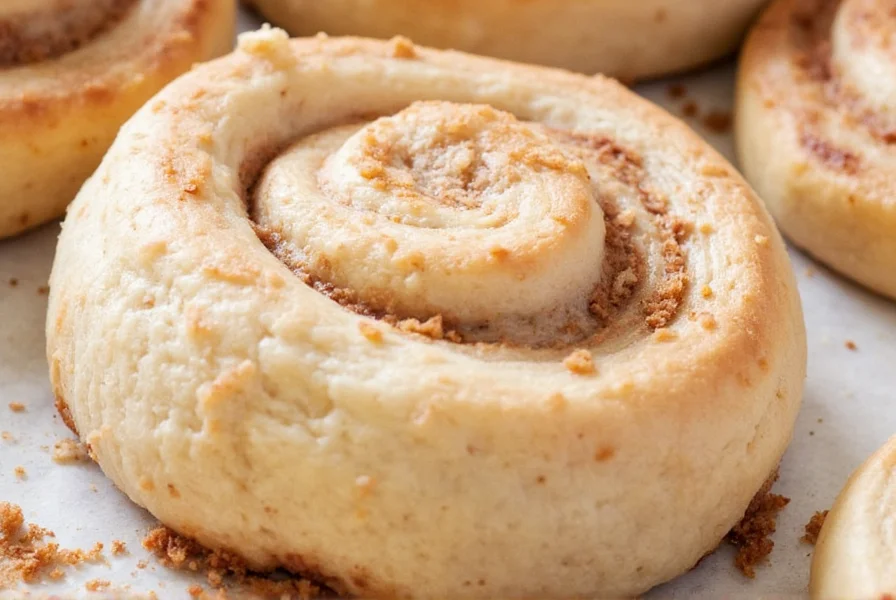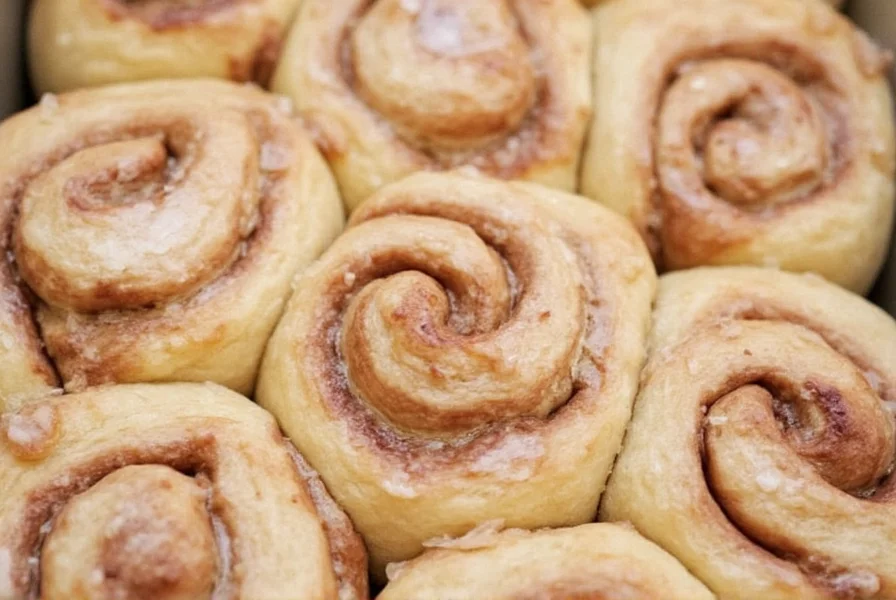Nothing compares to the aroma of freshly baked cinnamon buns filling your kitchen. This classic recipe delivers soft, pillowy rolls with just the right balance of sweet dough and spicy cinnamon filling. After perfecting this technique through decades of baking experience, I've identified the precise ratios and methods that guarantee success every time.
Essential Ingredients for Perfect Cinnamon Buns
Understanding each ingredient's role transforms good cinnamon buns into exceptional ones. Don't substitute haphazardly—baking is a science where measurements matter.
| Ingredient | Function | Critical Notes |
|---|---|---|
| Active dry yeast | Rising agent | Must be fresh; test in warm water with sugar before use |
| Warm milk (110°F) | Activates yeast | Too hot kills yeast; too cold won't activate properly |
| All-purpose flour | Structure foundation | Measure by spoon-and-level method, not scooping |
| Ceylon cinnamon | Flavor profile | Softer, sweeter than Cassia; use 2 tsp for balanced flavor |
Equipment Checklist
Gather these tools before starting for seamless preparation:
- Stand mixer with dough hook (hand-kneading takes 15+ minutes)
- 9x13 inch baking pan
- Dough scraper
- Pastry brush for butter application
- Instant-read thermometer (critical for milk temperature)

Step-by-Step Baking Instructions
Dough Preparation (45 minutes)
- Activate yeast: Combine 1/4 cup warm milk, 1 tsp sugar, and yeast. Wait 5-10 minutes until foamy.
- Mix wet ingredients: Whisk remaining milk, melted butter, and egg until smooth.
- Combine: Add yeast mixture and wet ingredients to 2 cups flour, sugar, and salt. Mix until shaggy dough forms.
- Knead: Add remaining flour gradually while kneading 8-10 minutes until smooth and elastic.
- First rise: Place in oiled bowl, cover, and let rise in warm spot for 1-1.5 hours until doubled.
Filling and Shaping (20 minutes)
- Prepare filling: Mix brown sugar and cinnamon. Roll dough into 16x12 inch rectangle.
- Butter base: Spread 1/3 cup softened butter evenly over dough, leaving 1/2 inch border.
- Apply filling: Sprinkle cinnamon-sugar mixture evenly across buttered surface.
- Roll tightly: Starting from long edge, roll dough into log. Pinch seam to seal.
- Cut: Using dental floss (not knife), slice into 12 equal pieces.
Baking Process (35 minutes)
- Second rise: Place rolls in greased pan, cover, and rise 30-45 minutes until puffy.
- Bake: At 350°F for 20-25 minutes until golden brown and internal temperature reaches 190°F.
- Cool: Wait 15 minutes before applying icing to prevent melting.
- Icing: Whisk 4 oz cream cheese, 1/4 cup butter, 1 cup powdered sugar, and 1 tsp vanilla until smooth.

Professional Baking Tips for Flawless Results
These evidence-based techniques address common cinnamon bun failures:
- Dough too sticky? Resist adding excess flour during kneading—properly developed gluten will reduce stickiness.
- Filling leaking out? Leave 1/2 inch border when applying filling and seal edges tightly when rolling.
- Dense texture? Verify yeast activity before use and don't skip the second rise—under-proofed dough won't achieve proper lift.
- Burning bottoms? Place baking pan on middle rack with aluminum foil on lower rack to catch drips.
Storage and Serving Recommendations
Maximize freshness with these tested methods:
- Room temperature: Store in airtight container for up to 2 days
- Refrigerated: Keep for 5 days; reheat 10 seconds in microwave before serving
- Freezing: Wrap individual buns in plastic then foil; freeze up to 3 months. Thaw at room temperature 2 hours before reheating.
Popular Variations for Dietary Needs
Adapt this classic recipe while maintaining texture and flavor:
- Gluten-free: Substitute 1:1 gluten-free flour blend; add 1 tsp xanthan gum to dough
- Vegan: Replace milk with almond milk, butter with coconut oil, egg with flax egg (1 tbsp ground flax + 3 tbsp water)
- Lower sugar: Reduce filling sugar by 25% and use maple syrup in icing instead of powdered sugar
Frequently Asked Questions
How do you prevent cinnamon bun dough from shrinking when cutting?
Let the rolled dough rest for 5 minutes before cutting. This relaxes the gluten, preventing shrinkage. Use unflavored dental floss pulled through the dough instead of a knife for clean cuts without compression.
What's the ideal internal temperature for perfectly baked cinnamon buns?
Cinnamon buns reach optimal texture at 190°F internal temperature. Use an instant-read thermometer inserted into the center of a bun—this precise measurement prevents underbaking (gummy texture) or overbaking (dryness).
Can you prepare cinnamon bun dough the night before?
Yes—after the first rise, punch down dough, shape into log, wrap tightly, and refrigerate up to 24 hours. The cold fermentation develops flavor. Remove from fridge 1 hour before baking to allow proper second rise at room temperature.
Why did my cinnamon buns turn out dense instead of fluffy?
Dense cinnamon buns typically result from expired yeast, incorrect liquid temperature, insufficient rising time, or over-flouring the dough. Verify yeast activity, maintain proper rising environment (75-85°F), and measure flour by spoon-and-level method rather than scooping directly from the bag.
How can you make cinnamon bun icing without powdered sugar?
Create a cooked icing by combining 1/2 cup granulated sugar, 1/4 cup milk, 2 tbsp cornstarch, and pinch of salt in a saucepan. Cook over medium heat until thickened, then cool slightly before adding 1 tsp vanilla. This produces a smooth, pourable icing without powdered sugar.











 浙公网安备
33010002000092号
浙公网安备
33010002000092号 浙B2-20120091-4
浙B2-20120091-4